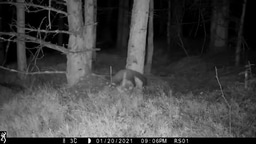Assessment of conservation strategy
CITATION: Noëlle F. Kümpel, Alex Quinn, Elise Queslin, Sophie Grange, David Mallon and Jean-Joseph Mapilanga (2015). Okapi ( Okapia johnstoni): Conservation Strategy and Status Review. Gland, Switzerland: IUCN and Institut Congolais pour la Conservation de la Nature (ICCN). pp. 58
The okapi is an iconic species for the Democratic Republic of Congo (DRC) and the world. The publication of the strategy in 2015 followed ten years of armed conflict and civil war.
This is a good example of a conservation strategy in some ways, and it has four years still to go. It was ‘a long-term framework for action, beginning with a long-term, idealised vision, followed by a more concrete goals, through a logical, hierarchical structure down to individual actions.’ However, some further analysis according to SDWC’s theory of change and setting the monitoring approach would have been better able to highlight control, confidences and priorities. Flow charts would show linkages more easily.
SDWC 6 PRINCIPLES:
The strategy generally follows these throughout. Look up, think big and look forward are addressed as part of a strategic programme of DRC’s National Strategy on Biodiversity Conservation in Protected Areas (see also below). Keep it wild, listen to the people and do no harm are addressed throughout, but some elements such as Objective 10 (socioeconomics for local people) in Table 5 are not possibly ‘Keeping it wild’?
STAKEHOLDER ENGAGEMENT
A detailed desk-based status review compiled by the Zoological Society of London (ZSL) was circulated to all selected stakeholders/invitees to a workshop in 2013. Forty stakeholders participated (a good spread: DRC’s nature conservation institute high-level representatives, chief wardens of reserves/national parks, politicians, law enforcement and monitoring officers, specialist species group co-chair, ZSL project co-ordinator, genetics PhD student, GIS technician, NGO project managers, local community leaders). Details of conservation management parties are provided in Section 7. Roles are assigned in in Section 9, Table 5 (objectives, activities, actors and chronology), in terms of responsibility, but not in terms of SDWC detail (information, acceptance, ownership and support).
CARRYING OUT A SITUATION ANALYSIS – this is the Status Review.
The population in 2013 was officially reclassified by IUCN as ‘Endangered’ on the IUCN Red List due to a decline in population >50% following the decade of armed conflict. Around 95% of genetic diversity had been preserved in captive breeding programmes around the world from the original 29 wild-caught animals.
Scope (Section 4) – this is very clear for in situ existing / proposed protected areas, but not for the ex situ 50 captive breeding institutions around the world.
Biodiversity target – Goals (Section 9.2) – these are clear:
- From now until 2025, viable populations of okapi are effectively protected, threats are reduced and populations are stable or increasing, in relation to the baseline data. [But no baseline dates could be given as the data are from different sources over time?]
- Ex situ populations of okapi are managed to maximise their benefit to the conservation of wild okapi.
Section 8 concerns a threat analysis (identification and assessment) for direct and indirect threats. These were identified in the Status Review and clarified during the workshop.
Table 3: Indirect threats identified could be interpreted as ‘behaviours’ or ‘contributing factors’, and some groups are also identified in another table, Table 1 (values and functions of the okapi).
No confidences are assigned.
Table 4: The assessment is tabulated according to extent, severity and irreversibility, but also urgency and trend, interestingly – and scored/rated.
DEFINING THE IMPACT and PLANNING THE WORK – these SDWC processes seem to have been combined in Section 9.
Table 5 created in the workshop outlines a comprehensive 10-year strategy with work packages identified.
Some of these are quite substantial in their own right, eg Objective 12 (managing the captive population) and Objective 10 (socioeconomic development of local communities). These could be broken down to concurrent or sequential projects all aiming for the same biodiversity target, with their own work packages? Would this have made the strategy a bit more manageable under SDWC?
Feasibility – seems to be covered by assigning work to partners with the expertise and the authority to carry it out – colour-coding SDWC-style would have been useful.
Sustainability (look forward and think big) – seems to be addressed specifically through Objective 13 (funding mechanism) and Objective 12 (captive bred population).
SETTING THE MONITORING APPROACH
The objectives are not completely SMART, as SDWC would require them, even though a lot of information is included in the table that could be added to.
No indicators/tolerances have been assigned.
Section 3 survey methods - some attempt has been made to distinguish between these: dung count, transect-based distance sampling, reconnaissance walks, patrol data, community monitoring, camera trapping, genetic capture-mark-recapture, including some good scientific rigour, technical capacity and authority by stakeholders (but difficult to assess in terms of ethical soundness and cost). A table for monitoring would make this clearer, that included tolerances, indicators and other methods alongside objectives, not just survey methods.

Please sign in or register for FREE
If you are a registered user on WildHub, please sign in